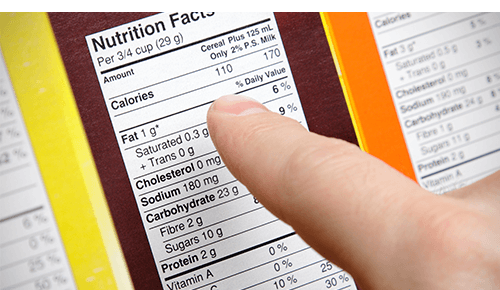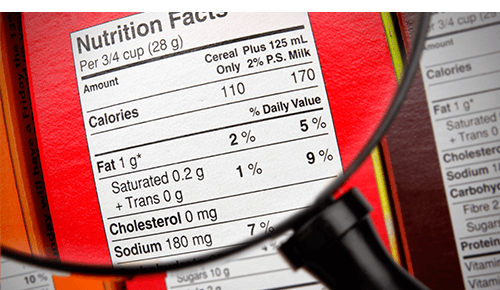For people looking to turn over a new wellness leaf by improving their diet, the grocery store is a great place to start. With a new emphasis on eating healthier foods by improving their grocery list, new dieters know they need to make better choices but some struggle to understand which ingredients will harm their efforts to improve their overall health. OhioHealth Dietitian Deanna Carey makes the case that nutrition labels are an excellent resource for those looking to eat cleaner.
Start at the Top
“The first place I would start is at the very top of the label. Always look at the serving size and how many servings there are per container,” says Carey. “Many people overlook this area and feel like they are eating healthy and doing well when they eat a salad and soup for lunch but upon further investigation, they have eaten an entire can of soup which is typically over exceeding sodium limits for any daily intake.”
Get Comfortable
Although food labels can be intimidating for those looking to make serious dietary improvements, the importance of knowing exactly what is in your diet cannot be overstated. Labels can serve as a guide on how many servings of food should be consumed in order to stay within nutritional guidelines and help you decrease intake of potentially harmful items such as sodium or fats. Carey believes that getting comfortable with these labels is a great way to make changes, especially for those looking to shed a few pounds.
Serving Size Matters
“For someone trying to lose weight I would definitely again pay attention to the serving size and really question what serving size am I having? How much do I have on my plate, in my bowl?” says Carey. “Then take a look at the calories per serving. General guidelines to follow are low calorie is around 40 calories, moderate calorie is around 100 calories and high calorie is around 400 calories.”
Know Your Ingredients
In addition to knowing the calories contained in your foods of choice, knowing the impact of certain items on your overall health can aid shoppers in making better choices. According to Carey, choosing foods that are low in fats can help the weight-loss process and protect the body against high cholesterol levels and an increased risk of heart disease. Shoppers can also take comfort in knowing that the Food and Drug Administration has regulations that manufacturers must follow. These regulations are designed to ensure that the labels are as accurate as possible so that people know exactly what they are getting when making decisions at the grocery store.
If shoppers still have questions or are looking for confirmation on the health benefits of specific foods, Carey says that additional resources are available. “The FDA is a great resource to utilize for further understanding food labels,” says Carey, “as well as reaching out to your local dietitians.”
If you want extra help, join us for one of our nutrition classes at OhioHealth!







